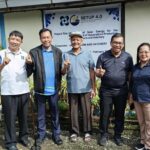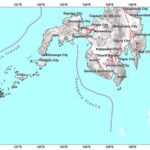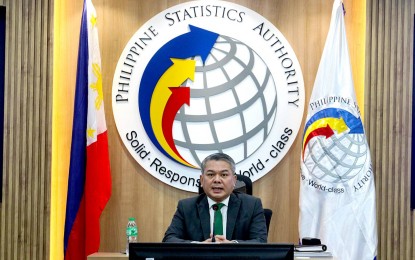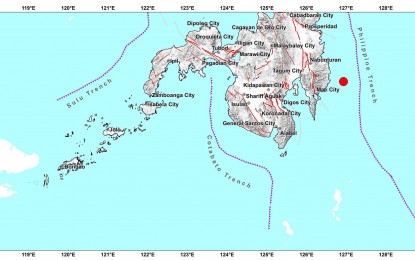The country’s unemployment rate dipped to its lowest level in November last year, while employment reached its highest since April 2005, the Philippine Statistics Authority (PSA) reported Tuesday.
At a briefing, National Statistician Dennis Mapa said results of the PSA’s latest Labor Force Survey (LFS) showed that unemployment rate further dipped to 3.6% during the month, down from the 4.2% recorded in November 2022 and October 2023. It was the lowest recorded unemployment rate since the PSA introduced a new methodology for measuring the LFS in 2005.
In terms of magnitude, the number of unemployed Filipinos was estimated at 1.83 million, down from 2.18 million in November 2022 and 2.09 million last October. The Labor Force Participation Rate (LFPR), meanwhile, was registered at 65.9% or about 51.47 million Filipinos aged 15 and above who were either employed or unemployed.
The LFPR during the month was lower than the 67.5% recorded in November last year. The National Economic and Development Authority (NEDA) said the decline was mainly due to reduced participation of young people (34.4% from 40%) and women (55.4% from 57.8%) in the labor force, influenced by family responsibilities, schooling, and age-related factors.
The country’s employment rate was estimated at 96.4%, also the highest recorded since April 2005. The number of employed Filipinos was estimated at 49.64 million. Underemployed persons or those who expressed the desire to have additional hours of work in their current job or to have an additional job or new job with longer hours of work was recorded at 5.6 million, lower than last year’s 7.16 million.
NEDA Secretary Arsenio Balisacan said there is a need to expand the digital economy, including the digitalization of Micro, Small, and Medium Enterprises and startups, to address the declining labor force and increase labor market gains in 2024 and beyond. “Digitalization enables alternative work arrangements, particularly for the youth, women, and those in the creative sector. This will help address the declining labor force,” he noted.
“We will take full advantage of the liberalization reforms intended to attract investments in the Philippines, especially in digital infrastructure. Upgrading our infrastructure will attract investments that generate high-quality jobs,” he stressed.
Balisacan said the government will further support a more productive, agile, and adaptive workforce by passing and implementing crucial regulatory reforms, such as the Apprenticeship Bill, Lifelong Learning Bill, and the Enterprise Productivity Act. He also underscored the need to establish a regulatory framework to allow alternative work arrangements, including part-time work.
“Allowing part-time work even in the formal sector will expand opportunities for lifelong learning, work experience in an organized setting, and coverage in social protection systems,” Balisacan said.
The Department of Labor and Employment (DOLE), meanwhile, vowed to work harder to further reduce the country’s unemployment rate. “We hope the employment rate continues to increase and the unemployment further dips for the benefit of our workers,” Labor Secretary Bienvendo Laguesma said in a phone interview.
He noted that to achieve these goals, they would create more job opportunities by partnering with the business sector as well as other government agencies. “DOLE will continue to collaborate with the private sector, particularly business organizations; and do convergence with other government departments, so that more decent, remunerative, and quality jobs can be created,” he added.
Laguesma welcomed the results of the November 2023 Labor Force Survey. “It can be attributed to the further easing of restrictions, and preparations of business firms for the Christmas and holiday season, among others,” he said.
Decent livelihood for all
In a related development, Albay 2nd District Rep. Joey Salceda, a noted economist, said the lowest unemployment rate since 2005 demonstrates the Marcos administration’s commitment to providing opportunities for decent livelihood for all.
In a statement on Tuesday, Salceda said President Ferdinand R. Marcos Jr. has focused on the agriculture, aquaculture and fishing sectors, which were fundamental to addressing food prices and rural poverty. He noted that jobs growth was buoyed in large part by agriculture with 1.24 million more jobs, and fishing and aquaculture with 305,000 jobs.
Salceda said the growth in construction and transportation also indicates higher demand for housing and consumer goods, which are positive signs for an economy. He suggested that the government continue to encourage investments in manufacturing, which lost some 1.39 million jobs year-on-year.
“We need a strong manufacturing sector because it is what will add value to our agricultural production, and it provides opportunities accessible to workers of all education levels. It is what has created strong middle classes in developed countries,” the economist-lawmaker p0ointed out.
Salceda said among the reforms that need to be pursued is the bill proposing amendments to the Corporate Recovery and Tax Incentives for Enterprises (CREATE) Act and procurement law amendments to give preference to domestic bids that offer goods, articles, supplies and materials substantially grown, produced, made or manufactured in the Philippines, even with a substantially cheaper qualifying foreign bid of up to 25 percent. (with PNA reports)












